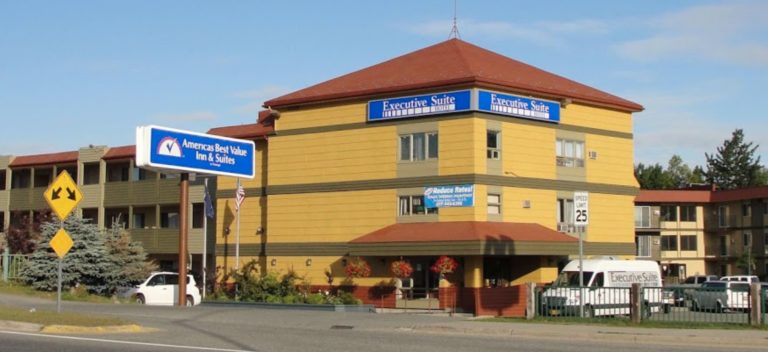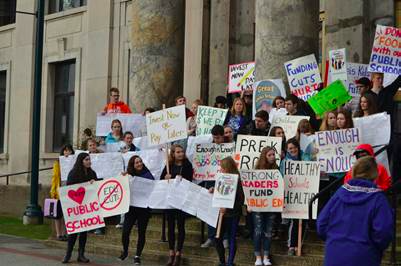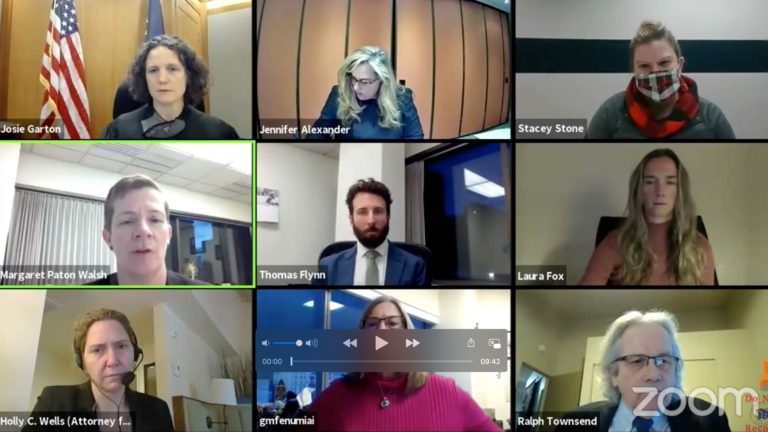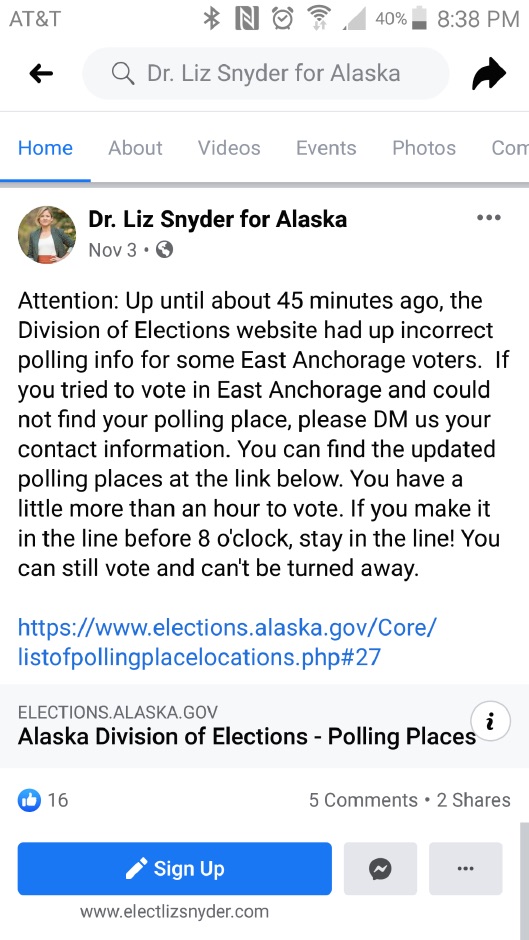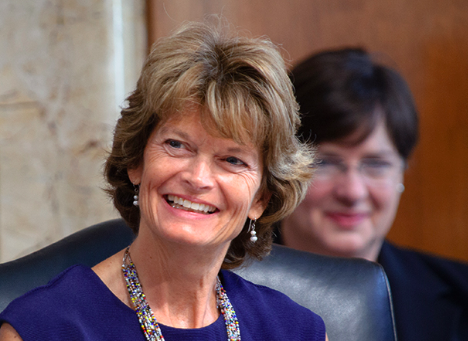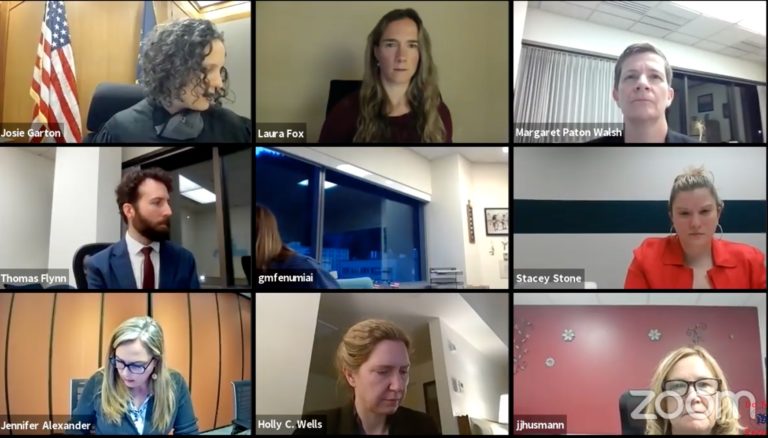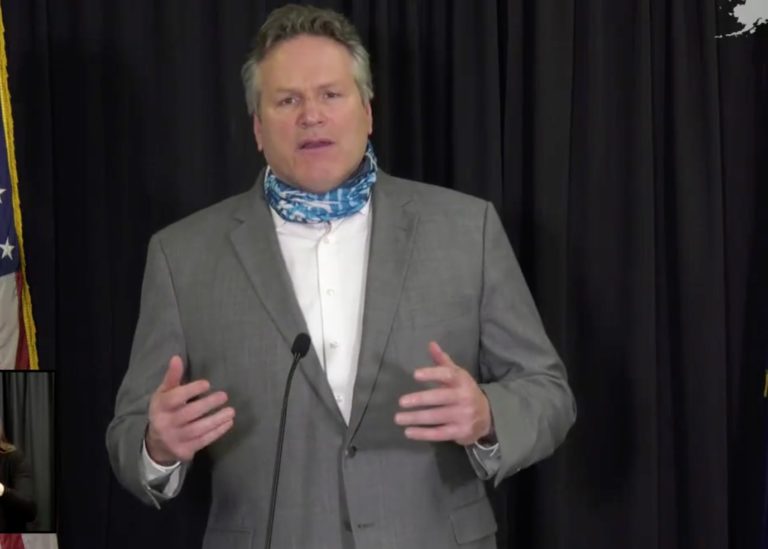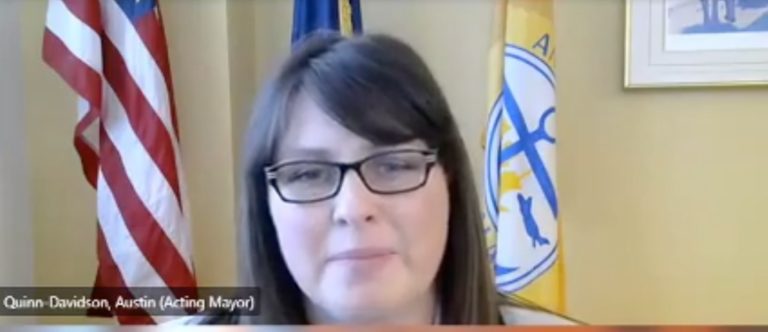The acting mayor of Anchorage says the city will not buy America’s Best Value Inn as part of an overall plan to address the need for additional shelter and housing caused by the COVID-19 pandemic.
Acting Mayor Austin Quinn-Davidson had already backed out of purchasing the Tudor Road Alaska Club building to provide services to vagrants and homeless in Anchorage.
But Quinn-Davidson did go ahead with the purchase of the Golden Lion Hotel on 36th and New Seward earlier this month, a purchase that came in at over $9 million.
The Golden Lion, Alaska Club, and America’s Best Value were part of a four-building purchase authorization by the Municipal Assembly to spread services and shelters throughout various districts in Anchorage, and take the burden off of the urban core, where most of the social problems related to homelessness and drug or alcohol addiction are centered.
But meanwhile, 120 homeless people are being housed at former Mayor Mark Begich’s Aviator Hotel on 4th Avenue in downtown Anchorage. Begich acquired the sprawling building earlier this year. Without customers, Begich cut a deal with the city to house homeless, at a rate not yet revealed by the municipality.
The highly controversial Ordinance 2020-66 authorized the purchase of specific buildings as part of former Mayor Ethan Berkowitz’ plan to expand the homeless industrial complex in Anchorage.
After he resigned in disgrace, Acting Mayor Quinn-Davidson inherited the project, which she had approved as part of the Anchorage Assembly, which directed some of the CARES Act funds from the federal government for the ambitious project.
The America’s Best Value Inn on Spenard Road backs up to a dormitory-style building that houses youth from villages who come into Anchorage for training. As it turns out, like the Tudor Road building, repairs would cost too much.
“Through the due diligence process, which the MOA uses before acquiring any property, significant costly repairs and mandatory upgrades were identified, including extensive upgrades to the elevators, stairwells, plumbing and electrical systems, and repairs to the exterior siding and roof. While some mandatory upgrades and repairs were anticipated, the costs of these upgrades and repairs were so high as to make acquisition no longer in the best interest of the municipality,” the acting mayor wrote.
“COVID-19 created an acute shortage of shelter space in Anchorage. The Municipality addressed the problem by standing up the mass shelter at the Sullivan Arena, however, that is not a permanent solution. The Sullivan Arena was not designed or intended to function as a shelter, and operating it as one costs almost $1 million per month. This cost is temporarily being reimbursed by the Federal Emergency Management Agency. Providing more housing options will return the Sullivan Arena to general community use, save the Municipality money, and help reduce homelessness in Anchorage, ensuring residents aren’t left out in the cold,” she wrote.
“The Anchorage Assembly previously directed the MOA to create additional shelter space, supportive housing, and support services outside of the downtown area; the MOA will continue vetting properties that meet that criteria,” she wrote.
